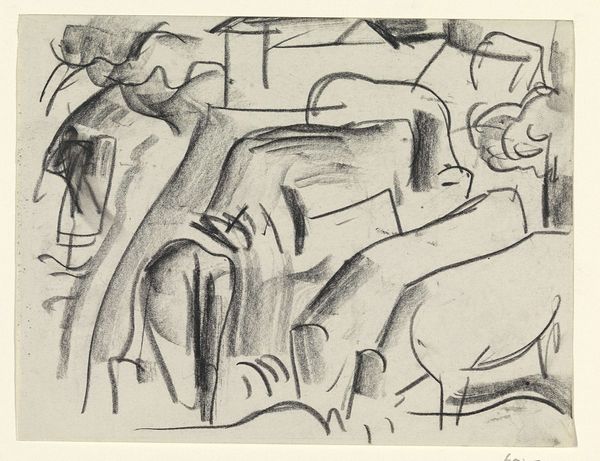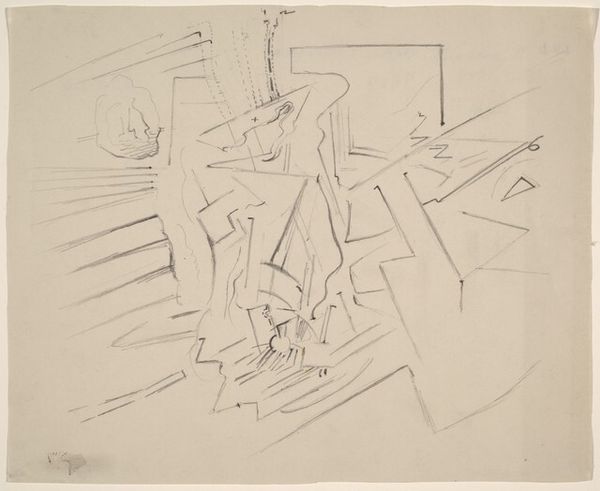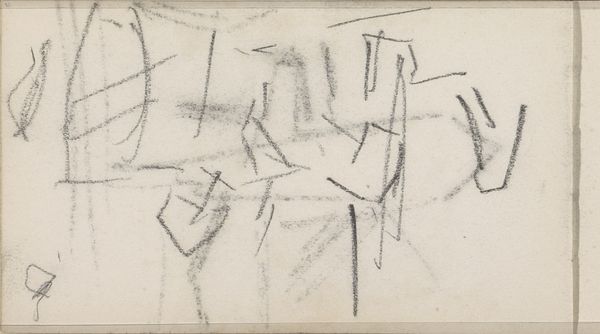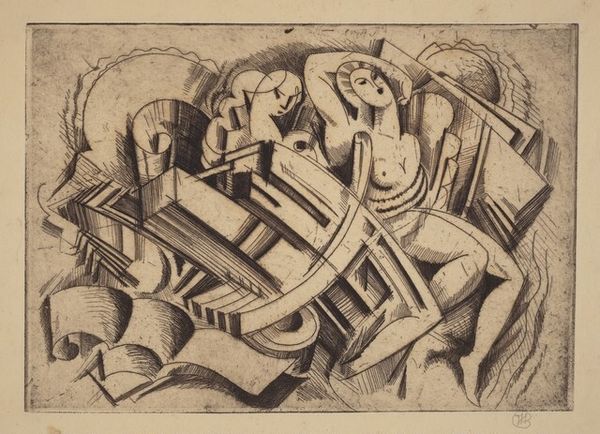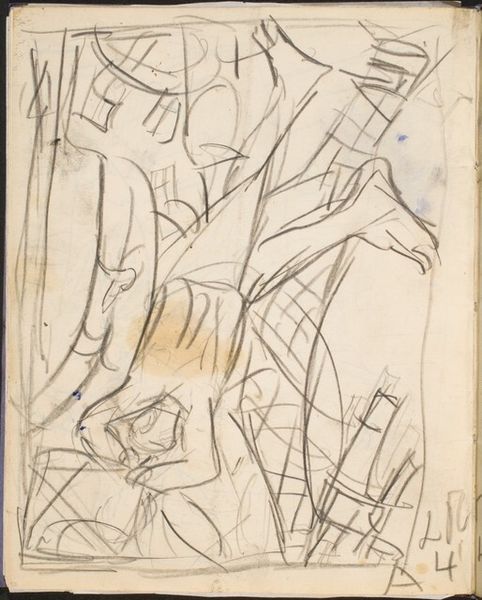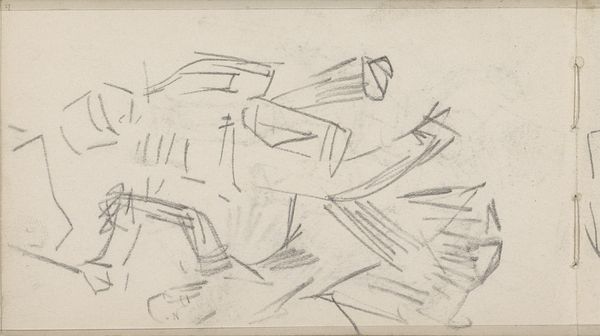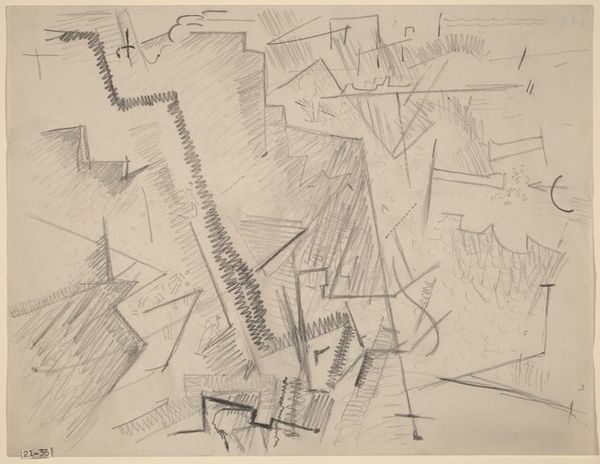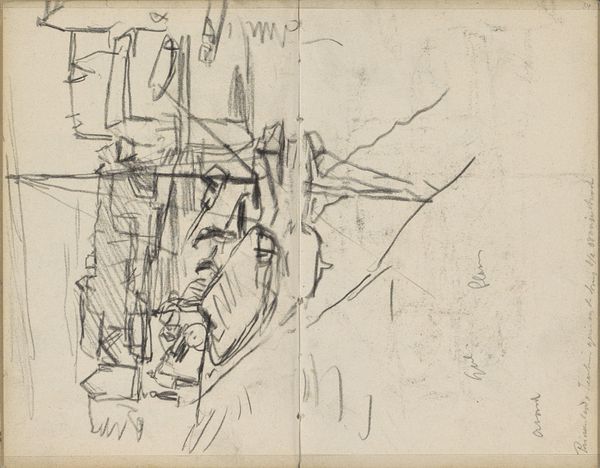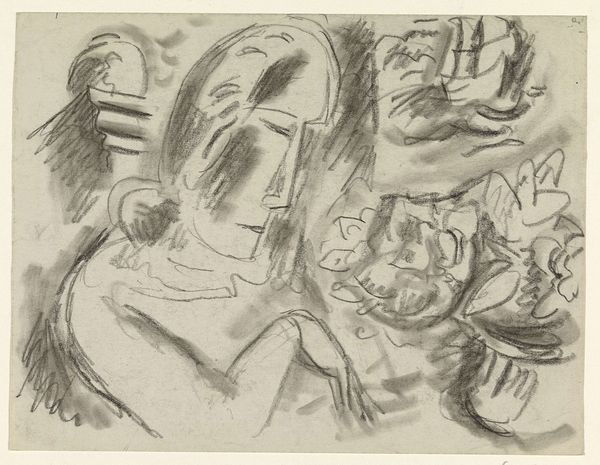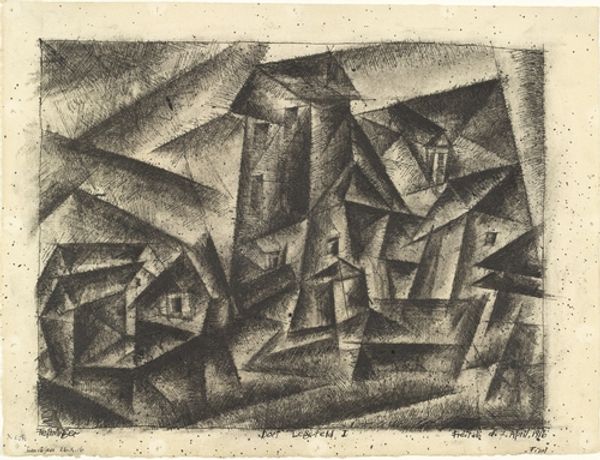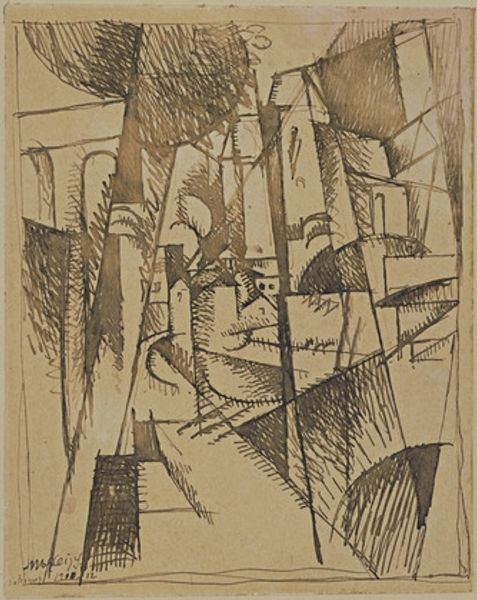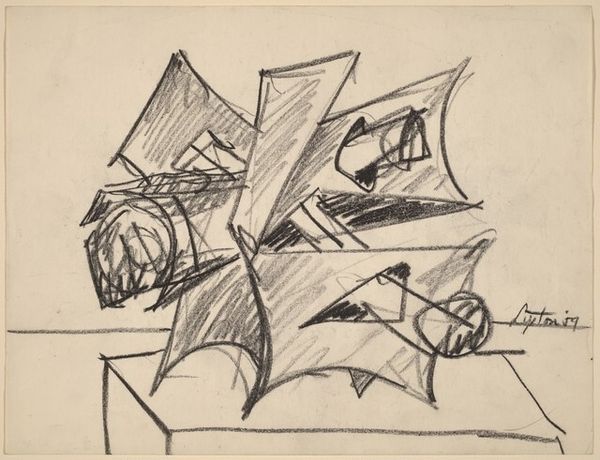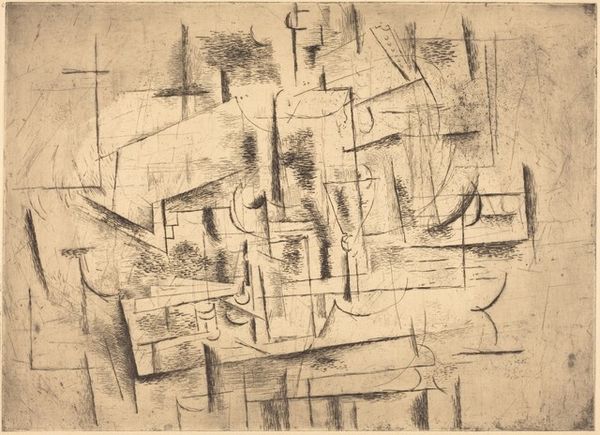
drawing, ink
#
drawing
#
cubism
#
figuration
#
ink
#
geometric
#
modernism
Copyright: Modern Artists: Artvee
Fernand Léger's 'The Game of Cards,' captures a scene of men engaged in a card game, rendered in a style that hints at the rise of modernism. The figures, though fragmented into geometric forms, retain a sense of humanity, yet are abstracted enough to carry a deeper symbolic weight. Consider the hat, worn by several figures here. The hat— historically, and still to some extent today— has always been a marker of status and identity. In ancient cultures, headwear could signify rank or occupation. We see echoes of this in the way Léger uses the hat to distinguish his figures, but here, the uniformity of style also suggests a leveling, a shared experience of modernity. The game itself is a tableau of human interaction and chance, a theme that runs throughout art history, from ancient Roman dice games depicted on frescoes to Dutch Golden Age paintings of tavern scenes. It represents something innate in us, the impulse to gamble, to test fate. This image evokes the collective memory of these scenes, but reframes them through a modern lens, revealing how even the oldest rituals are reshaped by the present.
Comments
No comments
Be the first to comment and join the conversation on the ultimate creative platform.

